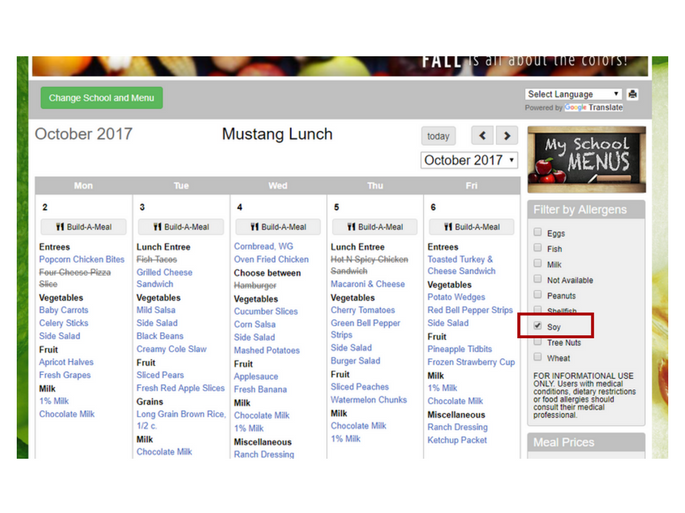Allergies and special diets have increased both the awareness of and need for allergen-specific and gluten-free school menus. Some of these allergies and intolerances can be very severe, with a wide range of symptoms: vomiting, stomach cramps, brain fog, mood swings, rash, bloating, chills, depression, etc. With 1% of the population estimated to suffer from Celiac’s Disease and another 6% who have non-Celiac gluten sensitivity, gluten-free school menus become increasingly important.
Outside of gluten-related issues, “the prevalence of childhood peanut or tree nut allergy appears to have more than tripled between 1997 and 2008.” Additionally, food allergies increased 50% among children in a nearly one-decade span. While some food allergy reactions can be very serious and life-threatening, in other situations, food allergies can impact quality of life: children with a food allergy are twice as likely to be bullied. Other strains on quality of life can be avoidance of camp or sleepovers, while others avoid restaurants and some restrict social activities and travel.
Both parents and school food service staff need to be vigilant to ensure students are eating nutritious meals that fit the needs of the student while maintaining compliance with USDA regulations, whether offering options for soy-free, dairy-free, meat-free, or gluten-free school menus.
School food service staff have enough challenges in offering options that are suitable for those with allergies–keeping sections of the kitchen and service area strictly gluten-free, for example. Menu planning software can help alleviate some of the complexity of offering allergy-free or gluten-free school menus, bridging the gap between the school food service staff and the parents.

At Health-e Pro, we built menu planning software entirely around the idea of making complex menu planning simpler, and that extends to allergens and attributes. In our menu planning software, we offer the capability to filter out meals that contain gluten, soy, dairy, nuts, meat, etc. In the screenshot above, you can see how selected allergens gray out any meals where that ingredient is present. That leaves the meals without that allergen in blue, making it easy to see visually which meals will fit within certain special diet parameters. With our mobile app, we provide that same visibility to students and parents with the convenience of their smartphone.
Allergies and food sensitivities are difficult enough, and software can make the difficult process of school meals simpler and more manageable.

